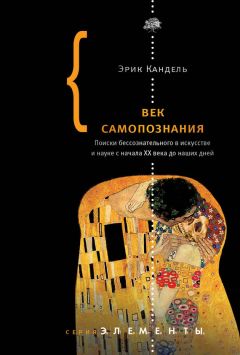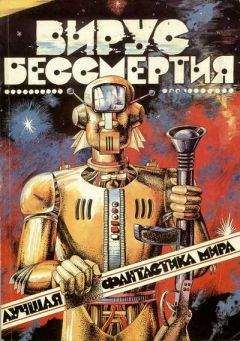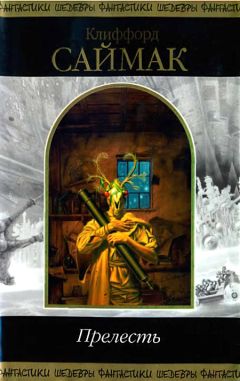Kamin, L. J. Predictability, Surprise, Attention, and Conditioning / In: Punishment and Aversive Behavior. Campbell, B. A., and R. M. Church, eds. New York: Appleton-Century-Crofts, 1969. Pp. 279–296.
Kampe, K. K., Frith, C. D., Dolan, R. J., and U. Frith Reward value of attractiveness and gaze // Nature 413 (2001): 589.
Kandel, E. R. Biology and the Future of Psychoanalysis / In: Psychiatry, Psychoanalysis, and the New Biology of Mind. Arlington, VA: American Psychiatric Publishing, 2005. Ch. 3.
Kirsch, P., Esslinger, C., Chen, Q., Mier, D., Lis, S., Siddhanti, S., Gruppe, H., Mattay, V. S., Gallhofer, B., and A. Meyer-Lindenberg Oxytocin modulates neural circuitry for social cognition and fear in humans // Journal of Neuroscience 25 (2005): 11489–11493.
Kosfeld, M., Heinrichs, M., Zak, P. J., Fischbacher, U., and E. Fehr Oxytocin increases trust in humans // Nature 435 (2005): 673–676.
Kosterlitz, H. W., and J. Hughes Some thoughts on the significance of enkephalin, the endogenous ligand // Life Sciences 17 (1) 1975: 91–96.
Kris, E. Psychoanalytic Explorations in Art. New York: International Universities Press, 1952.
Linden, D. J. The Compass of Pleasure: How Our Brains Make Fatty Foods, Orgasm, Exercise, Marijuana, Generosity, Vodka, Learning and Gambling Feel So Good. New York: Viking Press, 2011.
Natter, T. Portraits of Characters, Not Portraits of Faces: An Introduction to Kokoschka’s Early Portraits / Oskar Kokoschka: Early Portraits of Vienna and Berlin, 1909–1914. Neue Galerie. New York. 2002.
Ochsner, K. N., Bunge, S. A., Gross, J. J., and J. D. E. Gabrieli Rethinking feelings: An fMRI study of the cognitive regulation of emotion // Journal of Cognitive Neuroscience 14 (8) 2002: 1215–1229.
Ochsner, K. N., Knierim, K., Ludlow, D. H., Hanelin, J., Ramachandran, T., Glover, G., and S. C. Mackey Reflecting upon feelings: An fMRI study of neural systems supporting the attribution of emotion to self and other // Journal of Cognitive Neuroscience 16 (10) 2004: 1746–1772.
Olds, J. “Reward” from brain stimulation in the rat // Science 122 (1955): 878.
Olds, J., and P. Milner Positive reinforcement produced by electrical stimulation of the septal area and other regions of the rat brain // Journal of Comparative and Physiological Psychology 47 (1954): 419–427.
Olsson, A., and E. A. Phelps Social learning of fear // Nature Neuroscience 10 (2007): 1095–1102.
Pavlov, I. P. Conditioned Reflexes: An Investigation of the Physiological Activity of the Cerebral Cortex. London: Oxford University Press, 1927.
Pert, C. B., and S. H. Snyder Opiate receptor: Demonstration in nervous tissue // Science 179 (77) 1973: 1011–1014.
Ramachandran, V. S. The science of art: A neurological theory of aesthetic experience // Journal of Consciousness Study 6 (1999): 15–51.
Rodrigues, S. M., Saslow, L. R., Garcia, N., John, O. P., and D. Keltner Oxytocin receptor genetic variation relates to empathy and stress reactivity in humans // Proceedings of the National Academy of Sciences 106 (50) 2009: 21437–21441.
Rolls, E. T. Emotion Explained. Oxford: Oxford University Press, 2005.
Schachter, S., and J. E. Singer Cognitive, social, and physiological determinants of emotional states // Psychological Review 69 (1962): 379–399.
Schultz, W. Predictive reward signal of dopaminergic neurons // Journal of Neurophysiology 80 (1998): 1–27.
Schultz, W. Multiple reward signals in the brain // Nature Reviews Neuroscience 1 (2000): 199–207.
Singer, T., Seymour, B., O’Doherty, J., Kaube, H., Dolan, R. J., and C. Frith Empathy for pain involves the affective but not sensory components of pain // Science 303 (2004): 1157–1162.
Whalen, P. J., Kagan, J., Cook, R. G., Davis, C., Kim, H., Polis, S., McLaren, D. G., Somerville, L. H., McLean, A. A., Maxwell, J. C., and T. Johnston Human amygdala responsivity to masked fearful eye whites // Science 306 (2004): 2061.
Young, L. J., Young, M., and E. A. Hammock Anatomy and neurochemistry of the pair bond // Journal of Comparative Neurology 493 (2005): 51–57.
Глава 27. Художественные универсалиии австрийский экспрессионизмAiken, N. E. The Biological Origins of Art. Westport, CT: Praeger, 1998.
Cohen, P. Next big thing in English: Knowing they know that you know // New York Times, April 1, 2010.
Darwin, C. On the Origin of Species by Means of Natural Selection. New York: Appleton-Century-Crofts, 1859.
Darwin, C. The Descent of Man and Selection in Relation to Sex. New York: Appleton-Century-Crofts, 1871.
Darwin, C. The Expression of the Emotions in Man and Animals. New York: Appleton-Century-Crofts, 1872.
Dijkstra, B. Idols of Perversity: Fantasies of Feminine Evil in Fin-de-Siècle Culture. New York: Oxford University Press, 1986.
Dissanayake, E. What Is Art For? Seattle: University of Washington Press, 1988.
Dissanayake, E. Homo Aestheticus: Where Art Came from and Why. Seattle: University of Washington Press, 1995.
Dutton, D. The Art Instinct: Beauty, Pleasure, and Human Evolution. New York: Bloomsbury Press, 2009.
Fechner, G. T. Introduction to Aesthetics. Leipzig: Breitkoff & Hartel, 1876.
Hughes, R. Lucian Freud: Paintings. London: Thames and Hudson, 1987.
Iverson, S., Kupfermann, I., and E. R. Kandel Emotional States and Feelings / In: Principles of Neural Science. 4th ed. E. R. Kandel, J. H. Schwartz, T. Jessell, eds. New York: McGraw-Hill, 2000. Pp. 982–997.
Kimball, R. Nice things // Times Literary Supplement, March 20, 2009: 10–11.
Kris, E. Psychoanalytic Explorations in Art. New York: International Universities Press, 1952.
Kris, E., and E. H. Gombrich The Principles of Caricature // British Journal of Medical Psychology 17 (1938): 319–342.
Lang, P. J. The varieties of emotional experience: A meditation on James – Lange theory // Psychological Review 101 (1994): 211–221.
Lindauer, M. S. Physiognomy and art: Approaches from above, below, and sideways // Visual Art Research 10 (1984): 52–65.
Mellars, P. Archaeology: Origins of the female image // Nature 459 (2009): 176–177.
Natter, T. Portraits of Characters, Not Portraits of Faces: An Introduction to Kokoschka’s Early Portraits / In: Oskar Kokoschka: Early Portraits of Vienna and Berlin, 1909–1914. New York: Neue Galerie, 2002.
Pinker, S. How the Mind Works. New York: W. W. Norton, 1999.
Pinker, S. The Blank Slate. New York: Viking Penguin, 2002.
Ramachandran, V. S. The science of art: A neurological theory of aesthetic experience // Journal of Consciousness Study 6 (1999): 15–51.
Ryan, T. A., and C. B. Schwartz Speed of perception as a function of mode of representation // American Journal of Psychology 69 (1) 1956: 60–69.
Riegl, A. The Group Portraiture of Holland. Intro. by W. Kemp. Los Angeles: Getty Research Institute for the History of Art and the Humanities, 1999.
Singer, T., Seymour, B., O’Doherty, J., Kaube, H., Dolan, R. J., and C. D. Frith Empathy for pain involves the affective but not sensory components of pain // Science 303 (2004): 1157–1162.
Stocker, M. Judith: Sexual Warriors: Women and Power in Western Culture. New Haven: Yale University Press, 1998.
Tooby, J., and L. Cosmides Does beauty build adapted minds? Toward an evolutionary theory of aesthetics, fiction and the arts // SubStance 94/95 (30) 2001: 6–27.
Zeki, S. Inner Vision: An Exploration of Art and the Brain. New York: Oxford University Press, 1999.
Глава 28. Творческий мозгAndreasen, N. C. The Creating Brain: The Neuroscience of Genius. New York: Dana Press, 2005.
Andreasen, N. C. A Journey into Chaos: Creativity and the Unconscious // Mens Sana Monographs 9 (1) 2011: 42–53.
Berenson, B. The Italian Painters of the Renaissance. Oxford: Oxford University Press, 1930.
Bever, T. G., and R. J. Chiarello Cerebral dominance in musicians and nonmusicians // Science 185 (4150) 1974: 537–539.
Bowden, E. M., and M. J. Beeman Getting the right idea: Semantic activation in the right hemisphere may help solve insight problems // Psychological Science 9 (6) 1998: 435–440.
Bowden, E. M., and M. Jung-Beeman Aha! Insight experience correlates with solution activation in the right hemisphere // Psychonomic Bulletin and Review 10 (3) 2003: 730–737.
Bowden, E. M., Jung-Beeman, M., Fleck, J., and J. Kounios New approaches to demystifying insight // Trends in Cognitive Sciences 9 (7) 2005: 322–328.
Bower, B. Mood swings and creativity: New clues // Science News, October 24, 1987.
Changeux, J. P. Art and neuroscience // Leonardo 27 (3) 1994: 189–201.
Christian, B. Mind vs. machine: Why machines will never beat the human mind // Atlantic Magazine, March 2011.
Damasio, A. The somatic marker hypothesis and the possible functions of the prefrontal cortex // Proceedings of the Royal Society of London B 351 (1996): 1413–1420.
Damasio, A. Self Comes to Mind: Constructing the Conscious Brain. New York: Pantheon Books, 2010.
De Bono, E. Lateral Thinking: Creativity Step by Step. New York: Harper Colophon, 1973.
Edelman, G. Neural Darwinism: The Theory of Neuronal Group Selection. New York: Basic Books, 1987.
Fleck, J. I., Green, D. L., Stevenson, J. L., Payne, L., Bowden, E. M., Jung-Beeman, M., and J. Kounios The transliminal brain at rest: Baseline EEG, unusual experiences, and access to unconscious mental activity // Cortex 44 (10) 2008: 1353–1363.
Freedman, D. J., Riesenhuber, M., Poggio, T., and E. K. Miller Categorical representation of visual stimuli in the primate prefrontal cortex // Science 291 (2001): 312–316.
Gardner, H. Art, Mind, and Brain: A Cognitive Approach to Creativity. New York: Basic Books, 1982.
Gardner, H. Frames of Mind: The Theory of Multiple Intelligences. New York: Basic Books, 1983.
Gardner, H. Creating Minds: An Anatomy of Creativity as Seen Through the Lives of Freud, Einstein, Picasso, Stravinsky, Eliot, Graham, and Gandhi. New York: Basic Books, 1993.
Gardner, H. Five Minds for the Future. Boston: Harvard Business School Press, 2006.
Geake, J. G. The neurological basis of intelligence: Implications for education: An abstract // Gifted and Talented (9) 1 2005: 8.
Geake, J. G. Mathematical brains // Gifted and Talented (10) 1 2006: 2–7.
Goldberg, E., and L. D. Costa Hemisphere differences in the acquisition and use of descriptive systems // Brain Language 14 (1981): 144–173.
Gombrich, E. H. The Story of Art. London, Phaidon Press, 1950.
Gombrich, E. H. Art and Illusion: A Study in the Psychology of Pictorial Representation. Princeton and Oxford: Princeton University Press, 1960.
Gombrich, E. H. The Essential Gombrich: Selected Writings on Art and Culture. R. Woodfield, ed. London, Phaidon Press, 1996.
Gross, C. Left and Right in Science and Art / In: A Hole in the Head: More Tales in the History of Neuroscience. Cambridge, MA: MIT Press, 2009. Pp. 131–160.
Hawkins, J., and S. Blakeslee On Intelligence. New York: Henry Holt, 2004.
Holton, G. The Scientific Imagination: Case Studies. Cambridge: Cambridge University Press, 1978.
Jackson, J. H. Loss of speech: Its association with valvular disease of the heart, and with hemiplegia on the right side. Defects of smell. Defects of speech in chorea. Arterial regions in epilepsy // London Hospital Reports Vol. 1 (1864): 388–471.
James, W. What is an emotion? // Mind 9 (1884): 188–205.
Jamison, K. R. Exuberance: The Passion for Life. New York: Vintage Books; Random House, 2004.
Jung-Beeman, M., Bowden, E. M., Haberman, J., Frymiare, J. L., Arambel-Liu, S., Greenblatt, R., Reber, P. J., and J. Kounios Neural activity observed in people solving verbal problems with insight // PloS Biology 2 (4) 2004: 0500–0510.
Jung-Beeman, M. Bilateral brain processes for comprehending natural language // Trends in Cognitive Sciences 9 (11) 2005: 512–518.
Kounios, J., Fleck, J. I., Green, D. L., Payne, L., Stevenson, J. L., Bowden, E. M., and M. Jung-Beeman The origins of insight in resting-state brain activity // Neuropsychologia 46 (2007): 281–291.
Kounios, J., Frymiare, J. L., Bowden, E. M., Fleck, J. I., Subramaniam, K., Parrish, T. B., and M. Jung-Beeman The prepared mind: Neural activity prior to problem presentation predicts subsequent solution by sudden insight // Psychological Science 17 (2006): 882–890.
Kris, E. Psychoanalytic Explorations in Art. New York: International Universities Press, 1952.
Kurzweil, R. The Singularity Is Near: When Humans Transcend Biology. New York: Viking, 2005.
Lehrer, J. The Eureka hunt: Why do good ideas come to us when they do? // New Yorker, July 28, 2008: 40–45.
Markoff, J. Computer wins on “Jeopardy!” Trivial, it’s not // New York Times, February 17, 2011: A1.
Martin, A., Wiggs, C. L., and J. Weisberg Modulation of human medial temporal lobe activity by form, meaning, or experience // Hippocampus 7 (1997): 587–593.





